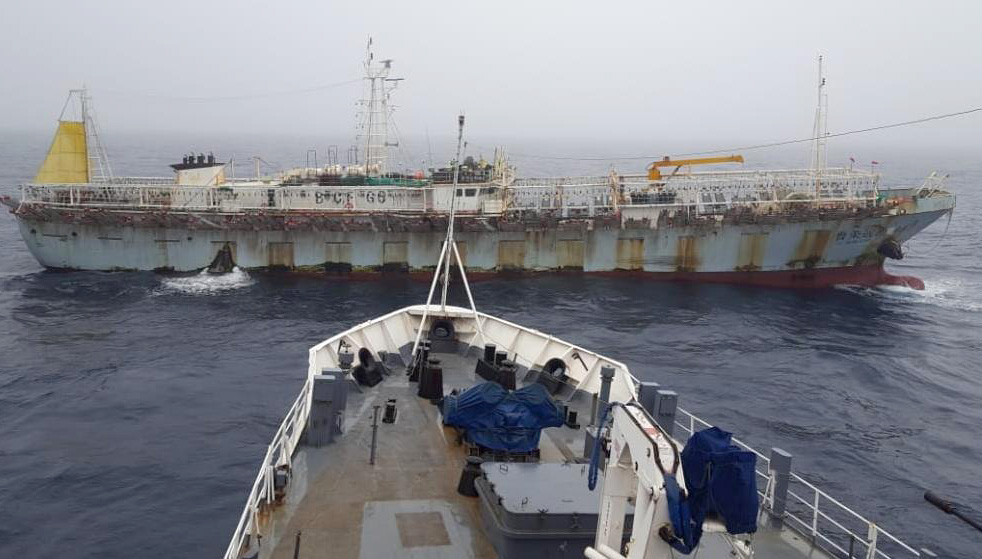
Spanish – A few months ago, fishermen and the U.S. Coast Guard had already warned of the presence of Chinese pirates in Chilean waters. However, the Chilean Navy had avoided making the warning official.
The Chilean Navy had even denied the illegal presence of these vessels, claiming that they were still in international waters off the coasts of Peru and Ecuador.
Meanwhile, Asian vessels were looting everything in their path, wiping out marine wildlife with uncontrolled illegal fishing activity.
But the position of the Chilean Navy changed when Commander Andrés Gallegos confirmed the presence of two Chinese vessels off its coast.
The ships are involved in the exploitation of squid. They were crossing the Chilean Exclusive Economic Zone, heading south, Infobae reported.
The new information revealed by the military institution adds that there are 430 boats in the same area, more than what was estimated by the U.S. and independent organizations.
430 illegal boats
With the tracking radars turned off, these boats venture into the waters of other countries to fish unchecked. The practice caused desolation in the Bohai Sea, located in northeast China itself, in 2018.
Now, the Chilean Navy reports 430 ships, of which two have already crossed the Atlantic through the Strait of Magellan, two others transit off the coast of southern Chile, and 74 were inspected by personnel of the marine component of the Chilean Armed Forces.
The Infobae article adds that the finding occurred during inspection rounds arranged in the area of responsibility for search and rescue (SAR).
A plane and the vessel “Cabo Odger” toured the coasts of the regions of Arica and Parinacota, as well as Tarapacá, where a fleet of more than seventy Chinese vessels is located.
Threat on the way
Currently, Chile is the country with the fifth-largest number of marine protected areas in the world (500,000 square kilometers), according to data from the International Union for the Conservation of Nature.
This record is threatened by the actions of the Navy running parallel to the Chinese regime. By November, the United States denounced that 300 cargo ships off the Peruvian coast were engaged in illegal fishing.
The NGO Oceana, which is dedicated to monitoring the seas, warned that the illegal fleet is at the edge of the Exclusive Economic Zone (EEZ) of Peru and 400 nautical miles northeast of the EEZ of Chile.
“The size of this fleet should be cause enough for concern, and even more so when they are probably turning off their automatic identification systems,” said Marla Valentine, illegal fishing and transparency analyst at Oceana’s office in the United States.
But the alerts already existed months ago. In April, Argentine maritime authorities detected a vessel fishing illegally off its coast.
The ship managed to dodge air and sea controls and escaped but was identified as a Chinese fishing boat named Lu Rong Yuan Yu 668, reports Mongabay.
Chinese exploitation
The Food and Agriculture Organization of the United Nations (FAO) indicates that 90% of marine fish stocks for commercial purposes are already fully exploited, Mongabay adds.
China’s perversion has risen to levels of extinction, another case being the Zhoushan Archipelago in the East China Sea.
It was so devastated that Chinese fishermen had to go further afield, specifically to the South Pacific.
“What is interesting is how they now keep these boats at sea for two years or more. These big tankers come, trans-shippers, adapted to refrigerate thousands of tons. Then they take the fish off these boats, leave them fuel, food, and then return to China. Earlier, they didn’t exist, but in the last few years, they have tripled,” says Oceana’s director, Liesbeth van der Meer.
 Versión Español
Versión Español













